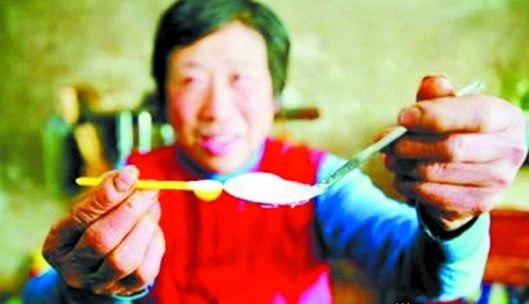
Daily Adult Salt Intake Reaches 15.2 Grams in Beijing: 40% is from Eating Out
A study carried out in urban Beijing and nearby rural areas showed that adult residents’ average daily salt intake was as high as 15.2 grams. The study demonstrated that 39.5% of salt intake came from eating out, and 90% of the whole intake was from cooking salt. The study result was published in the medical journal Nutrients recently and is available on line with open access.
Substantial scientific evidence links a high-salt diet with high blood pressure, which causes life threatening cardiovascular diseases such as stroke and heart disease. Thanks to the efforts of the government and various national and local health institutes, the harms of high salt consumption and the benefits of salt reduction are becoming more widely known in China.
However, the actual amount and sources of individual daily salt intake is still unknown for most people. This lack of information has become a major obstacle to encouraging salt reduction.
‘Because the excess salt in your diet is rapidly eliminated by your kidneys, twenty-four-hour urine collection is considered to be the “gold standard” method for salt intake estimation,’says Associate Professor Puhong ZHANG, the principal investigator from The George Institute for Global Health at Peking University Health Science Center. ‘However this method is time consuming and challenging to undertake. Also the support of a chemistry laboratory is needed. Furthermore, this method does not identify the sources of the excess salt.’
So to estimate dietary salt intake and identify the sources of salt intake in family members in Beijing, the study team designed a simplified one-week dietary record named the “one week salt intake estimation method”, which combined weighing cooking salt and major salt containing foods with evidence based estimation of salt consumption when dining out. Information regarding the accuracy of this method can be found by clicking here.
The “one week salt intake estimation method” was initially used in a study carried out in Beijing in 2011, with 903 families (1981 parents and 971 children) participating. The results showed that:
- The salt consumption of children and adolescents (aged under 18) was 11.0 g/person/day
- The salt consumption of adults (aged 18 – 59) was 15.2 g/person/day
- The salt consumption of senior citizens (aged above 60) was 10.2 g/person/day
Sources of dietary salt intake:
- 60.5% of dietary salt was consumed at home. (88.5% from household cooking, 11.5% from processed food)
- 39.5% of dietary salt was consumed at cafeterias or restaurants
- About 90% of the salt was added during cooking, while less than 10% came from processed food.
Rural residents in Huairou district consumed more salt (14g/person/day) than urban residents in Xicheng district (12.3grams/person/day). Men consumed more salt then women.
‘We also found that low sodium salt now accounts for 21.5% of the salt added to food within households. This might be attributed to Chinese government’s promotion of low sodium salt from 2011,’ Dr. Zhang added.
The importance of this study is not only the estimation of individual daily salt intake in the Chinese diet, which is well above the levels recommended by the World Health Organisation. It is also the identification of the main sources of the high dietary salt intake. This information is crucial in providing guidance for sodium reduction in everyday life. The fact that the principal source was found to be salt added in cooking, both at home and in cafeterias or restaurants, identifies a simple means of reducing the intake in the future.
‘This data helps us to develop a more effective strategy for dietary salt reduction,’ said Dr Zhang. ‘For home cooking, health education should be conducted to encourage people to use less high salt condiments, and substitute low sodium salt. For salt reduction when dining out, the government should encourage the catering industry to recommend low-sodium food to customers, and to standardize and improve the pre-packaged food labelling system to guide the public to make healthy food choices.’
The ‘one week salt intake estimation method’ can help people to understand the amount of salt they are eating, and its main sources. It will also be a useful tool for researchers to evaluate the result of salt reduction programs.
By way of conclusion Dr Zhang added, ‘We plan to carry out additional larger scale studies to substantiate our new method and to enhance its accuracy among different populations. In the future, a smart phone component will also be added, to help people acquire more accurate health data and reliable health guidance, perhaps by simply scanning the bar codes on the food they buy at the market.’
NB. To read the new research paper in full, please click here. A paper describing the methodology of the ‘one week salt intake estimation method’ article was published in Nutients online on 22 January 2015. To read it click here..
This research was undertaken by the academic staff of the George Institute for Global Health, China with the financial support of the Danone Institute, China.

